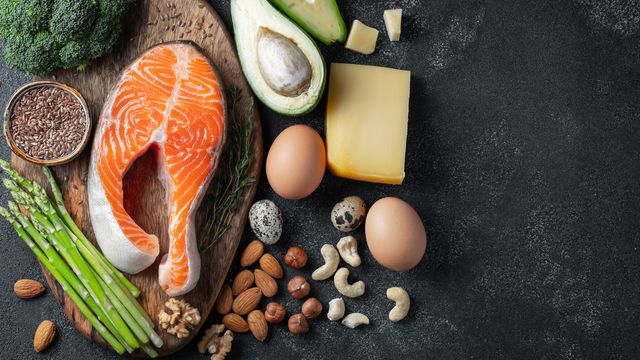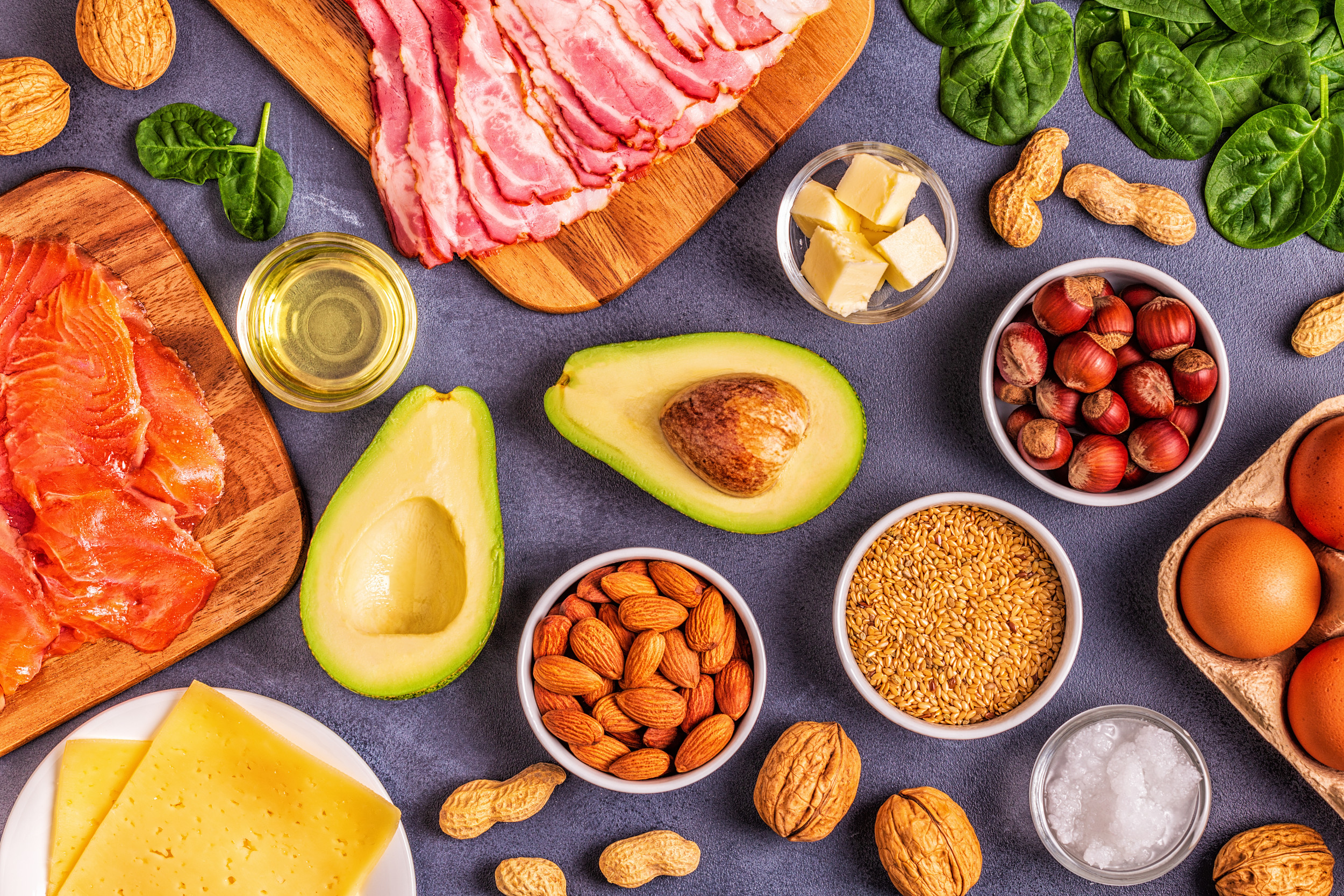This study aimed to evaluate the effects of gender differences on weight loss, in changes in body composition and inflammatory status in patients with grade I and II obesity without metabolic comorbidities undergoing a VLEKT for 45 days. All study participants complied with the 45 days of the VLEKT protocol, obtaining significant weight loss, remodeling of body composition and reduction of the inflammatory state. Along with the expected overall improvements, we also observed that males experience overall larger benefits than premenopausal females from VLEKT in terms of weight loss, body composition improvements, and reduction of inflammation.
This was in line with a very recent study that revealed that the efficacy of adhering to a VLEKT in severe obesity is influenced by gender differences and, in the case of females, by menopausal status. In this study, males tended to experience greater benefits than pre-menopausal females in terms of excess body weight loss (EBWL) and improvement in non-alcoholic fatty liver disease (NAFLD). However, these differences become less pronounced after menopause, likely due to changes in hormonal profiles and body composition. In contrast, post-menopausal females emerged as the group that derived the least benefit from following the VLEKT. However, limitations of the study, including the small sample size, particularly the underrepresented male group, affected the generalizability results [23]. Notably, our study extended this understanding by demonstrating that improvements in body composition along with reductions in inflammation measured by hs-CRP, were more pronounced in males compared to females following the VLEKT protocol. Additionally, we provided insights into how factors such as baseline body composition, hormonal profiles, and hydration status may influence these gender-specific responses to dietary interventions in obesity management. These findings highlight the importance of considering sex differences in personalized approaches to obesity treatment, particularly regarding dietary interventions like VLEKTs.
At baseline, in our study population, females exhibited lower weight, WC, and SMM (kg and %) and higher FM (%) and FFM (kg and %) compared to males. A higher percentage of males fell into the obesity class II category in contrast to females. The prevalence of obesity varies globally, with socio-economic factors influencing patterns [7]. In the U.S. (NHANES 2005–2014), women had a higher obesity rate (40%) than men (35%), while Italy (2016) showed a reversal, with men having a higher rate (51% vs. 34% in women) [34, 35]. In addition, it is already known that women have more body fat and less muscle mass than men. Compared with men, women also have more subcutaneous fat, particularly in the abdominal and gluteal-femoral areas, and less visceral fat [36].
In our study population, females also showed higher R and lower PhA compared to males at baseline. In these regards, evidence reports that gender primarily influences variability in R, with higher values in females than in males at all frequencies [37,38,39]. PhA is the ratio of Xc to R and describes the relationship between ICW and ECW, or between BCM and extracellular mass. PhA is one of the best indicators of cellular health. Studies suggest that the higher the PhA, the stronger the cell membrane and the better the cell function [40, 41]. Generally, PhA increases with good health, proper nutrition, and exercise, but also in males [42]. Higher PhA in males than in females is probably due to greater BCM and thus greater SMM (the largest intracellular water reservoir) often seen in males [43], as also shown in our results.
As for hydration and body water spaces, females showed lower TBW (lt and %), ECW (lt) and ICW (lt and %) but higher ECW (%) compared to males. Obesity is characterized by alterations in hydration and body water spaces. It was previously demonstrated that as people increase in BMI from normality to obesity, TBW makes a significantly lower proportion of weight [44]. In addition, there is a gender difference in this parameter, and at the same BMI, females have less water per kg of body weight than males [44]. In obesity, apart from an increase in FM and, to a lesser extent, increased FFM, the ECW compartment is enlarged compared with the ICW compartment. Proposed explanations for the high ECW/ICW ratio are a high ECW/ICW of the adipose tissue [45, 46], obesity-related edema, and hormonal responses related to the adipose tissue [47]. Thus, looking at the previously presented percentage showing higher FM in females could also explain the higher ECW content found in females compared to males.
Examining the percentage changes (Δ%) in our population study parameters by gender, females compared to males exhibited the following:
-
a)
Significantly lower decreases in BMI, WC, and FM (kg and %).
We can attempt to elucidate these discrepancies considering the hypothesized mechanisms of action of VLEKT, although this remains largely unknown. Fundamentally, VLEKTs aim to induce a metabolic shift from carbohydrates to triglycerides stored in adipose tissue, establishing them as the primary energy source for basal metabolism [48]. Notably, visceral adipose tissue exhibits greater metabolic activity compared to subcutaneous visceral fat, characterized by heightened lipolysis and increased release of free fatty acids [49]. Considering that males have more visceral fat, as also evidenced in our population with higher baseline WC than females, and higher basal energy expenditure due to higher lean mass, as found in our results with higher baseline FFM and SMM in male participants, these factors could contribute to the more significant benefits observed in males adhering to a VLEKT, especially in terms of body weight loss and improved body composition.
Studies have also found some evidence that specific dietary approaches may have differential effects by gender [46, 47, 50, 51]. For example, one study of adults randomized to either healthy low-carbohydrate (HLC) or healthy low-fat (HLF) for 12 months found that males were more likely to adhere to HLC diets than females and that females had higher adherence to HLF diets than HLC diets [50]. Men had more success with HLC diets than HLF diets, while women did not demonstrate a significant difference in success between the two diets [50]. Multiple studies also assessed gender differences following low-energy diets or very-low energy diets, with many findings that males were more successful in achieving higher percent weight loss [51,52,53].
-
b)
Percentage changes in R varied significantly between females and males, decreasing in the former and increasing in the latter. For Xc and PhA, the increases were also significantly lower in females than in males.
Our previous results emphasized that changes in PhA during the active phase of VLEKT occurred early in treatment and were not influenced by confounding variables, particularly weight loss [16, 54]. Based on these results, we unveil an interesting aspect: gender significantly influences PhA improvement during VLEKT, showing more pronounced improvement in males, even when they start with higher baseline values than females.
-
c)
Significantly lower decreases in TBW (lt) and ECW (lt and %), significantly lower increases in ICW (%) and significantly higher increases in TBW (%),
-
d)
Significantly lower decreases in hs-CRP levels.
Water is vital for life, the major constituent of the human body, and the main element of cells, tissues, and organs [55]. Furthermore, water is an excellent solvent, reaction medium, reactant, and reaction product; it is a carrier of nutrients and waste products, involved in thermoregulation, and a lubricant and shock absorber [56]. Thus, fluid balance is critical in health and disease and involved in stress- and inflammation-induced changes during the development of various acute or chronic diseases [57,58,59,60]. Of note, ECW has attracted interest as an inflammatory marker. In a large multicenter retrospective study of 9246 subjects, ECW has been associated with medically unexplained symptoms a persistent psychosomatic bodily complaint, employed as a clinical index of chronic stress and inflammation [61]. In peritoneal dialysis patients, inflammation has been related to extracellular fluid volume expansion [62,63,64]. It has been proposed that expanded extracellular volume, due to inadequate water and sodium removal, acts as an inflammatory stimulus in these patients [65, 66]. On the other hand, the inflammatory process itself may promote ECW expansion, as seen in patients with peritonitis. In addition, in the general population, CRP, is also considered to be a marker of inflammation, and a powerful risk factor for ischemic heart disease and peripheral atherosclerosis [67]. In our investigation, we observed a more pronounced reduction in inflammatory status, measured by hs-CRP, among males compared to females. While the greater reduction in WC and FM and the substantial improvement in PhA in males contribute to this phenomenon, we propose that the noteworthy decrease in ECW in males at the conclusion of the VLEKT could be a pivotal factor.
Limitations and strengths
Our study has several strengths but also limitations. First, this pilot study of an adult population involved a single-center analysis that may have introduced some selection bias. However, we adopted strict inclusion criteria for selecting study participants. These criteria aimed to create a homogeneous and representative sample to avoid the influence of external factors that could alter the results. Second, as a pilot study, we did not extend our observations to the subsequent VLEKT stages. However, due to the very short observation period, it was possible to avoid potential patient dropouts. Thirdly, there was no statistical analysis of the side effects of VLEKT, although all safety parameters were monitored during the endocrinological and nutritional assessments. However, the lack of this analysis cannot have influenced the results of the study, since, as we have previously shown in a study on a larger number of subjects [68], when appropriately designed and prescribed, VLEKT represents a safe dietary intervention that does not lead to major alterations in haematochemical parameters, and side effects are minimal, mostly transient, and do not occur according to a gender-specific trend. Furthermore, hormone levels that could potentially influence weight loss were not measured, limiting the assessment of their impact on study outcomes. For strengths, BIA is a widely used and valid method for the assessment of body composition, including obesity. It is noninvasive, rapid, and relatively simple to perform, making it a practical choice in clinical and research settings. As a direct BIA measurement, PhA is not influenced by altered tissue hydration in the algorithmic computations to assess other body composition compartments [54]. Another strength of this study was the performance and interpretation of BIA measurements by only one clinical nutritionist to minimize inter-operator variability. Hs-CRP is widely recognized as the most used marker of inflammation [69], adding robustness to the study’s assessment of inflammatory status. Finally, adherence to VLEKT was evaluated weekly, ensuring the maintenance of ketosis and consistency in lifestyle throughout the study period.




